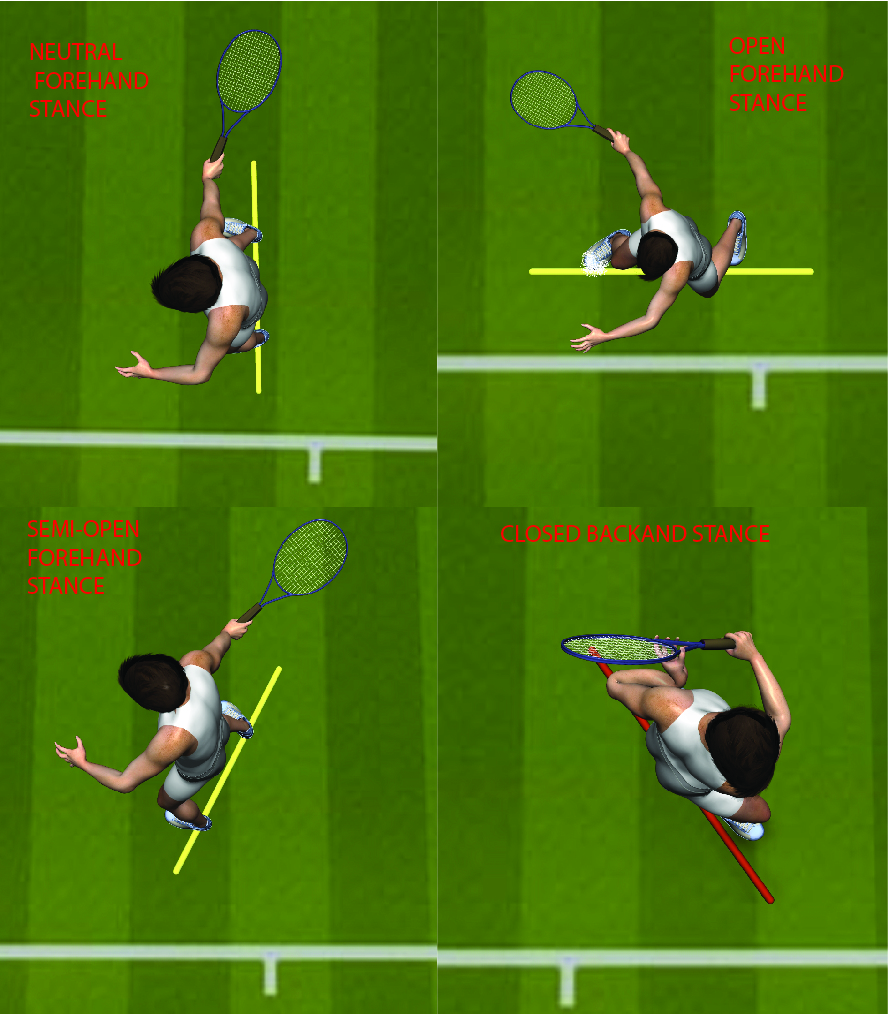The Importance of Stance
In our discussion of balance, I emphasize the relationship between dynamic balance and force generation. In dynamic balance, since weight is moving from one foot to the other, each footfall lands with many times the body weight of the stepper. Tons of pounds per square inch of pressure of the feet against the court massively increases friction or purchase between one's foot and the court resulting in superior ability to harvest momentum from the earth. That momentum is one of two essential components of the power wave, the other being energy. The job of the power wave is to carry energy and momentum through the body to the forearm and wrist. Energy and momentum are the raw material of not only pace but also control and spin. That brings up an important point: There is no control without power. If you think you can sacrifice power for control, you will always be disappointed. You can hit the ball with minimal pace, such as a drop shot, but you must generate power and inject it into the ball, or you will get no control at all, and you will miss.
The process of actually generating the power wave starts with solid contact with the court, but then one must use muscle energy from the legs to create the wave. That is a complex process (meaning it is beyond my understanding) with a straightforward outcome - get the hips rotating. I do know two essential things about that process. First, to create an effective rotation of the hips both feet have to be in contact with the earth during the generation of the wave. Since dynamic balance has us constantly shifting our weight from one foot to the other, the generation of a power wave must occur as the weight is being transfered. The need for you to transfer weight from one foot to the other to generate power is the actual basis of the old admonition to "...step into the ball!" With two feet firmly anchored to the court surface, you can generate torque in the hips. Second, the usable arc of rotation of the hips plus shoulders is small - less than 90 degrees.

We all enjoy imagining our bodies to be infinitely flexible, but even for conditioned athletes, the truth is sadly different. Limited flexibility of the hips and spine effectively defines one's stance. If your feet are in the wrong position when the time comes to generate a power wave, you will produce nothing. On the forehand side the placement of the feet is somewhat open (naval pointing across the baseline) and therefore natural, but on the backhand side, the stance must be closed (with the back pointing across the baseline). A closed stance for the one-handed backhand is as crucial for the volley as it is for the groundstroke. Remember that when you don't have the proper stance, you cannot generate adequate power. That means no pace, no control, and less spin. Creation of an inadequate power wave is the principal pathophysiology of Powerlessness Syndrome, a common malady that can result in either under-hitting or over-hitting the ball, both without control. Optimizing stance in the pose is well worth one's attention.
